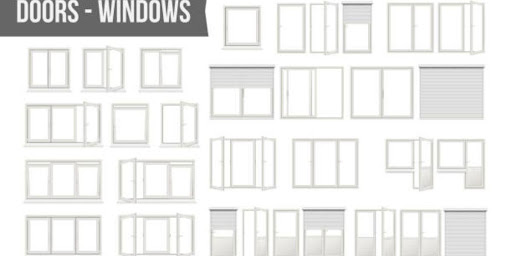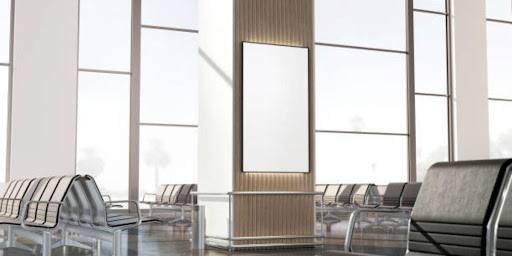Power Articles
Industry Elevating Content
Understanding the Anatomy of a Window

PowerArticles
Oct. 30, 2023
Understanding the Anatomy of a Window is crucial for home improvement companies specializing in window and door installations. In this informative guide, we will break down the key components of a window, explaining each part in straightforward language. Whether you’re a seasoned professional or just getting started in the industry, this knowledge will empower you to provide better service to your customers and ensure that every window installation is a success. So, let’s embark on a journey through the fundamental elements that make up a window and discover how they work together to create the perfect blend of aesthetics and functionality for any home.
Types of Windows
Windows come in various styles and types, each serving specific functions and adding unique aesthetics to your home. Here are some common types of windows:
Single-Hung Windows:
- These windows have two sashes, but only the bottom one moves vertically.
- Ideal for traditional and classic home designs.
Double-Hung Windows:
- Similar to single-hung, but both sashes can move up and down, providing better ventilation.
- Versatile and suitable for various architectural styles.
Casement Windows:
- Hinged on the side and open outward like a door.
- Excellent for maximizing ventilation and energy efficiency.
Awning Windows:
- Hinged at the top and open outward, creating an awning-like effect.
- Great for letting in fresh air while preventing rain from entering.
Sliding Windows:
- Horizontal sashes that slide open.
- Ideal for contemporary and modern homes.
Bay and Bow Windows:
- These create a curved projection outward from the home.
- Perfect for adding space and allowing more natural light in.
Picture Windows:
- Large, fixed windows that don’t open.
- Provide unobstructed views and lots of natural light.

Window Components
Understanding the components of a window is crucial for home improvement companies. Here are the main elements:
Frame:
- The outer structure of the window, holding all components together.
- Can be made from various materials like wood, vinyl, aluminum, or fiberglass.
Sash:
- The part of the window that holds the glass and moves within the frame.
- In double-hung windows, there are upper and lower sashes.
Glass:
- The main part you see through.
- Options include single, double, or triple-pane glass for improved insulation.
Grilles and Mullions:
- Decorative elements that divide the glass into smaller panes.
- Add style and can be customized.
Hardware:
- Includes locks, handles, and hinges, allowing the window to open and close.
- Essential for security and ease of use.
Weatherstripping:
- Seals gaps around the window frame to prevent drafts and enhance energy efficiency.
- Important for maintaining indoor comfort.

Window Materials
The choice of window material affects durability, maintenance, and appearance. Here are some common options:
Wood:
- Offers a classic, warm, and traditional look.
- Requires regular maintenance to prevent rot or warping.
Vinyl:
- Low-maintenance, affordable, and energy-efficient.
- Comes in various colors and styles.
Aluminum:
- Lightweight, durable, and resistant to corrosion.
- Suitable for modern and industrial designs.
Fiberglass:
- Strong, low-maintenance, and durable.
- A good choice for extreme weather conditions.
Composite:
- Combines various materials, like wood and vinyl, to create a strong and energy-efficient option.
- Provides a balance between aesthetics and performance.

Window Styles
Windows come in various styles, each with a unique look and purpose. Understanding the different window styles is crucial when choosing the right one for your home.
Traditional
Traditional windows often feature a classic design, with sashes that open vertically or horizontally. They suit homes with a timeless, elegant appearance. Double-hung and casement windows are typical examples of traditional styles.
Modern
Modern windows have sleek, clean lines and often showcase larger glass areas. They complement contemporary architecture and are designed for maximum natural light and unobstructed views. Picture and sliding windows are popular in modern homes.
Colonial
Colonial-style windows pay homage to early American architecture. They have multiple panes divided by grids, typically in a symmetrical pattern. These windows bring a sense of historical charm and are common in colonial or Cape Cod-style houses.
Craftsman
Craftsman windows reflect the Arts and Crafts architectural movement. They emphasize craftsmanship with detailed woodwork and overhanging eaves. These windows often feature geometric patterns in their design, such as Prairie grids.
Contemporary
Contemporary windows are all about simplicity and functionality. They embrace minimalism and often have expansive, unadorned glass surfaces. Awning and fixed windows are examples of contemporary style.
Window Energy Efficiency
Understanding the energy efficiency of windows is essential for homeowners seeking to reduce energy costs and environmental impact.
U-Factor and R-Value
The U-factor measures a window’s ability to prevent heat transfer. The lower the U-factor, the better the insulation. The R-value is the inverse of the U-factor, representing the window’s thermal resistance. Higher R-values indicate better insulation.
Low-E Coatings
Low-E (low emissivity) coatings are thin, invisible layers applied to the glass. They reduce heat transfer and UV radiation, improving energy efficiency. Low-E coatings help keep homes warmer in winter and cooler in summer.
Gas Fills
Some windows are filled with insulating gases like argon or krypton between the glass panes. These gases provide better insulation compared to air. They improve energy efficiency and soundproofing.
Insulated Frames
In addition to the glass, the frame plays a role in energy efficiency. Insulated frames, often made from vinyl or fiberglass, provide a thermal break, preventing heat or cold from transferring through the frame. This helps maintain a comfortable indoor environment.
Common Window Problems
Understanding common window problems helps home improvement companies address issues and educate customers on maintenance.
Condensation
Condensation occurs when warm, moist indoor air meets cold glass surfaces. It can lead to mold, mildew, and damage to window frames. Proper ventilation and controlling indoor humidity are key solutions.
Air Leaks
Air leaks around windows waste energy and create drafts. Weatherstripping and caulking are effective solutions to seal gaps and prevent air infiltration.
Fogged Glass
Fogged glass is a sign of a failed seal in insulated windows. It can reduce visibility and insulation. Replacing the insulated glass unit (IGU) or the entire window is often necessary.
Rotting Wood
Wooden window frames are prone to rot if not properly maintained. Regular painting or sealing and addressing any signs of decay promptly can prolong the life of the window.
Conclusion
In conclusion, comprehending the anatomy of a window is paramount for home improvement companies specializing in window and door installations. By understanding the essential components like sashes, frames, glazing, and hardware, these professionals can provide better services to homeowners, ensuring proper functionality, energy efficiency, and aesthetic appeal. Knowledge of the various window types, such as single-hung, double-hung, casement, or awning, is crucial for meeting clients’ specific needs. With this foundational knowledge, window installers can deliver top-notch services and enhance the comfort, security, and value of the homes they work on, thereby building trust and customer satisfaction.
Published By
PowerArticles
Oct. 30, 2023